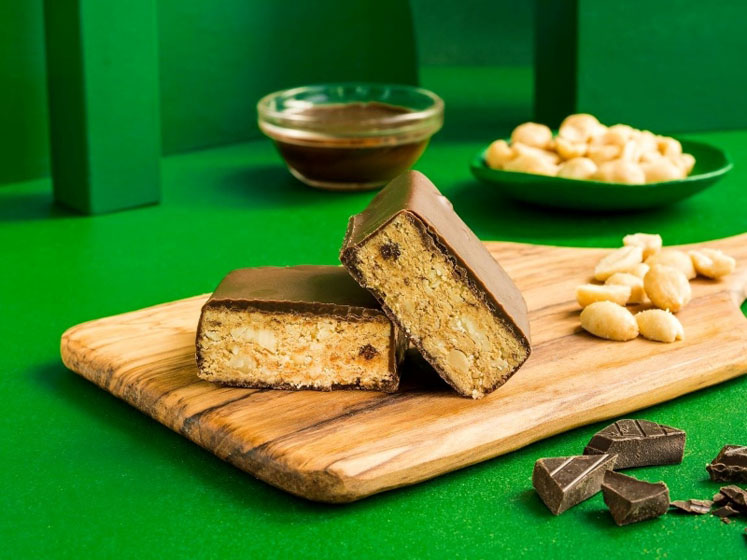Tara Bane, EMEA Marketing Manager at Glanbia Nutritionals reviews recent snacking trends and delves deeper into how more health-conscious consumers are driving a positive impact on the snack market, which has, in turn, reduced the consumption of sugars.
She also looks at how the pandemic has forced companies to re-evaluate flavour profiles to meet the demand of new trends in tastes.
Although the number of times we snack in a day has stayed consistent with prepandemic times, the overall volume of snacks being consumed is rising, with 54% of UK consumers admitting to snacking when they are bored.
The pandemic may have impacted where we eat our snacks, but snacking breaks have continued to be a welcome relief for UK consumers.
And whereas the snack industry was slowly shifting to accommodate more healthy products, COVID has now accelerated the move. But what do consumers expect from their healthy snack?

Tara Bane
When asked, more than half of global consumers considered a snack to be either a single serve portion of a food or something that offers a nutritional boost. Large numbers of consumers agreed with this statement, illustrating a shift in views away from meals toward snacks.
According to Euromonitor, the global health and wellness snacks market is forecast to reach $98 billion by 2025, growing at a rate of CAGR 5.8% between 2020 and 2025. The health and wellness sector is on the rise and is set to continue growing as attitudes towards snacks and health change.
Move towards healthy eating
Although the COVID pandemic may not have changed the way we consume snacks, it has altered the reasons behind our snacking, bringing a new emphasis on health and wellness for many mainstream consumers.
In fact, nearly three in four UK consumers stated they were looking to transition to eating more healthily owing to the pandemic. Healthy snacking is no longer the preserve of a minority, but rather significant numbers of us are becoming more health-conscious and seeking out nutritious snacks.
From plant-based jerky bars and oat milk yoghurts to flavoured almond butter squeeze packs, healthy snacks are in high demand and the listed ingredients, nutrients and claims carry huge sway in terms of the choices that consumers are making.
In Glanbia Nutritionals’ recent survey of 2001 consumers in the UK, a third of participants admitted to snacking more when no one is looking … but did choose more healthily at home.
Additionally, 54% of people indicated that they expected snacks to offer a nutritional boost. Consumers want to keep themselves in good condition so they can fight off any potential illnesses, train at higher intensities for longer and enjoy better health.
Prompted by the pandemic, the rise of fortified foods in snacks has also seen a huge upturn as consumers shift towards healthier lifestyles and eating choices, and focus on nutritional benefits.
One sector of the fortified foods industry that has seen growth is the high-protein snack. Previously consumed mainly by fitness enthusiasts, this snack is on the rise; 51% of global consumers have switched from traditional snack products, such as chocolate and confectionery, to high protein/low sugar alternatives.
Millennials are a large driving force behind the interest in high protein snacks, which provide satiety and work well as meal replacements. The bar category continues to be strongly impacted by this trend, with protein bars leading category growth. In 2020, nearly one in three global snack bar launches featured a high protein claim.
Sugars
A direct result of the move towards healthier eating and snacking products is the prominence of “free from” or “reduced” products, with sugars being directly impacted.
Products are offering variations including reduced sugar, low sugar and no added sugars. Companies are now making great strides to create low and no sugar snack alternatives.

Preferences for clean labels has made stevia a go-to ingredient for manufacturers working to meet the growing demand for low sugar snacks.
Another sugar alternative being heavily featured is manuka honey. Originating from the Maori name of the tree, manuka honey is produced by European honeybees and has a strong, aromatic flavour.
Product releases including manuka honey, or manuka honey flavouring, have grown annually at an average of 47% since 2016, confirming the popularity of this sugar alternative.
Flavour profiles
The upsurge in demand for new flavours and ingredients in snacks has forced companies to evaluate trends and respond accordingly. Long-haul travel might be off the cards for the time being, but new international flavours are definitely on the green list for consumers.
It is hard to say if this increasing preference for new flavours is linked to consumer wanderlust and tight travel restrictions, but one flavour profile that has been on the rise in recent years is Indian cuisine.
Indian-spiced snacks such as garam masala, tamarind sesame and chai masala are appearing in more and more snacks globally. Indian flavour combinations present an opportunity to combine sweet and savoury profiles, enticing consumers to try new products — with 41% of UK consumers agreeing that sweet snacks containing spices were appealing.
Truffle has experienced a surge in demand owing to its distinct and fresh taste, with shaved truffles and truffle oils becoming a popular choice for UK consumers.
However, truffles have recently expanded beyond the confines of fine dining and into retail packaged products, including snack foods. In 2020, Nestlé introduced three new Quality Street truffle boxes in Europe and, for a limited time, UK food supermarket Waitrose featured a holiday treat of black truffle hand cooked potato crisps.
The post-COVID period promises to be a period of opportunity for food manufacturers as consumers seek healthy, nutritious and flavoursome snacks as they adjust to the pandemic afterlife.
Companies that keep up with consumer trends to offer consumers the right products with the right ingredients will be poised for success.
